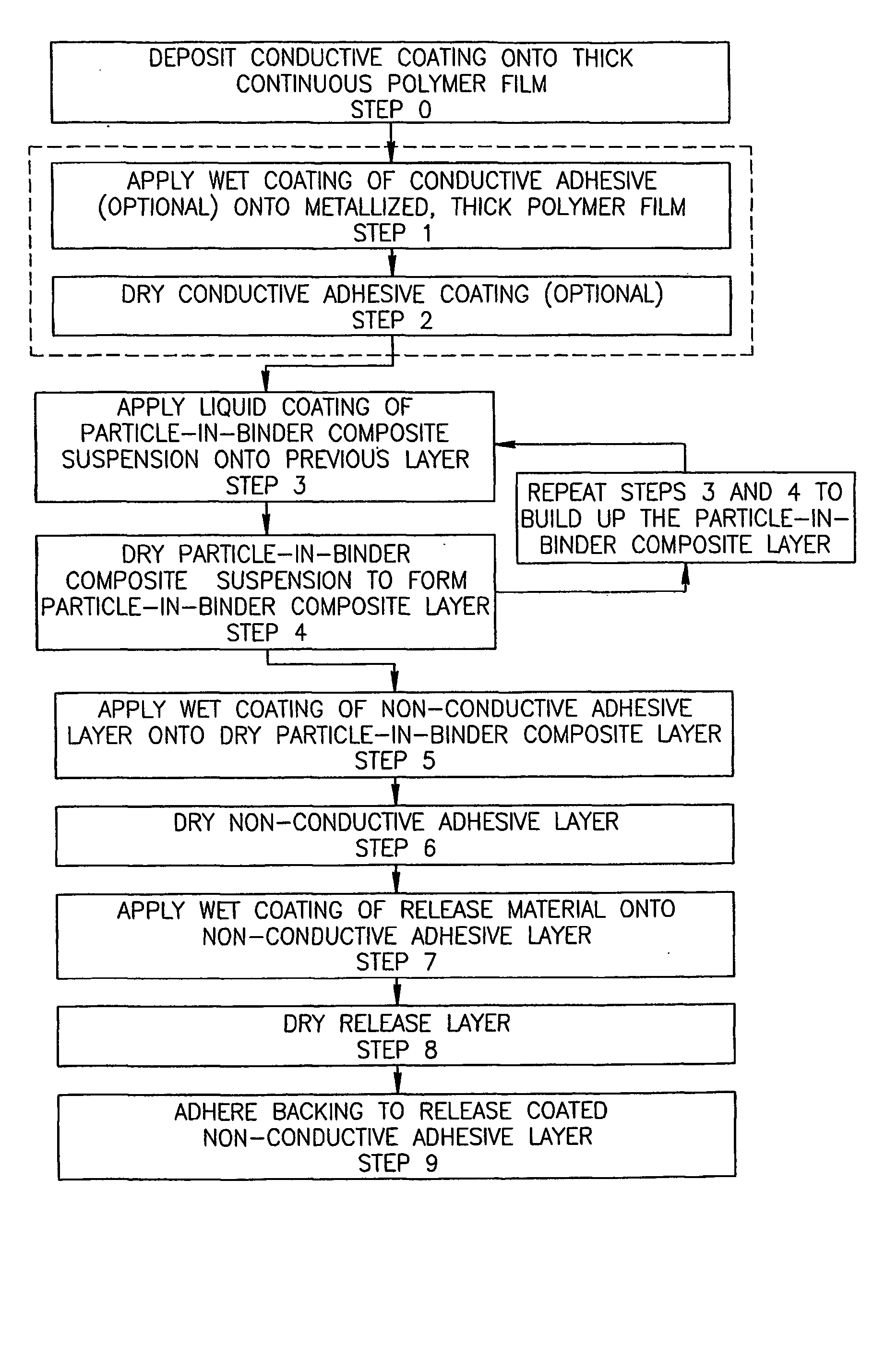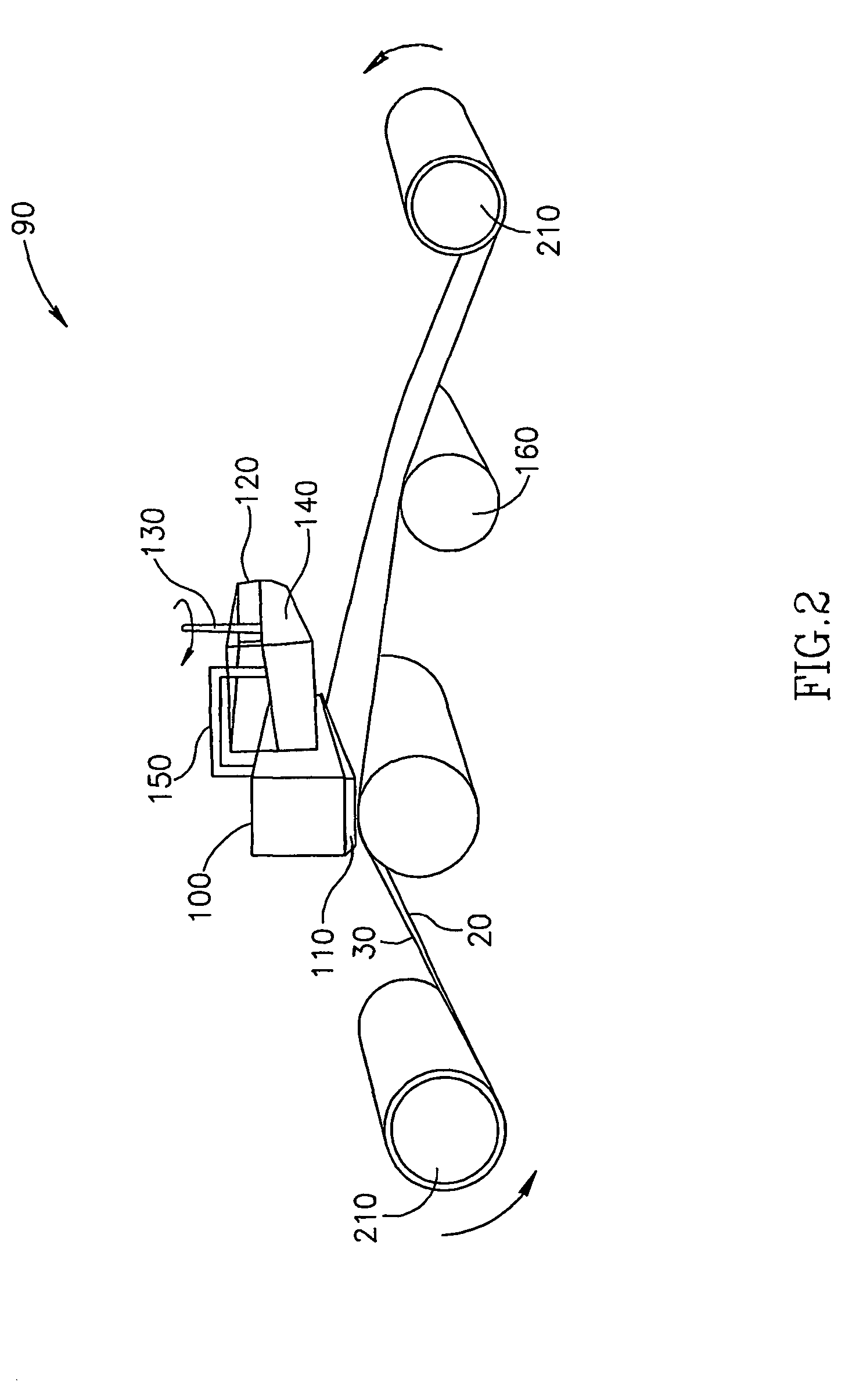Laminated radiation detector and process for fabrication thereof
a technology of laser radiation detector and fabrication process, which is applied in the direction of radiation measurement, instruments, measurement devices, etc., can solve the problems of limited size, high cost and time consumption, and current flowing between the electrodes, and achieves high tolerances and enhance product robustness
- Summary
- Abstract
- Description
- Claims
- Application Information
AI Technical Summary
Benefits of technology
Problems solved by technology
Method used
Image
Examples
Embodiment Construction
[0103] Referring now to FIG. 6, a cross-sectional schematic of a multi-layer prototype structure 410 is shown. As shown in FIG. 6, a multi-layer prototype structure 410 comprising a commercially available PET film 420 coated with an ITO layer 430 was adhered to a 200 micron thick HgI.sub.2 and polystyrene composite layer 450, using a 160 micron thick double sided adhesive film 440 available from SPI Supplies, West Chester, Pa., Adhesive Research Inc., Glen Rock, Pa. or 3M, Minneappolis, Minn., among others. The multi-layer structure was adhered to an ITO 460 glass substrate 480 using one 1 cm.times.1 cm `pixel` of double-sided conductive film 470. Areas 465 represent voids between ITO 460 glass substrate 480 and HgI.sub.2 and polystyrene composite layer 450.
[0104] FIGS. 7, 8 and 9 are graphs showing the sensitivity, dark current and sensitivity to dark current ratio responses, respectively, with respect to applied bias for the prototype in FIG. 6. The results obtained demonstrate th...
PUM
 Login to View More
Login to View More Abstract
Description
Claims
Application Information
 Login to View More
Login to View More - R&D
- Intellectual Property
- Life Sciences
- Materials
- Tech Scout
- Unparalleled Data Quality
- Higher Quality Content
- 60% Fewer Hallucinations
Browse by: Latest US Patents, China's latest patents, Technical Efficacy Thesaurus, Application Domain, Technology Topic, Popular Technical Reports.
© 2025 PatSnap. All rights reserved.Legal|Privacy policy|Modern Slavery Act Transparency Statement|Sitemap|About US| Contact US: help@patsnap.com



